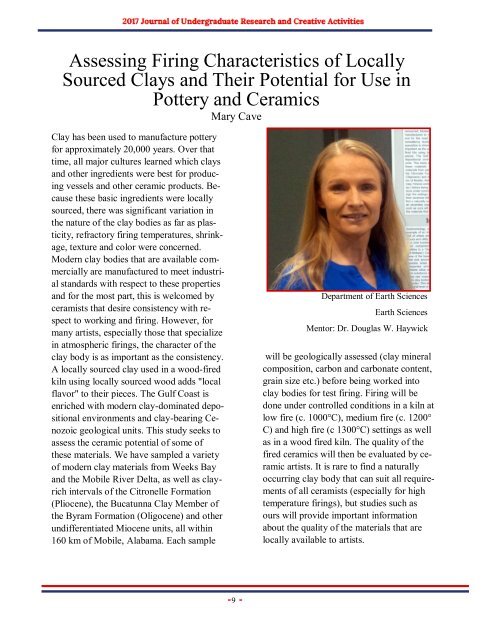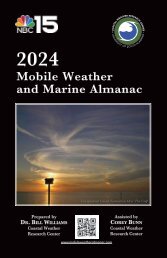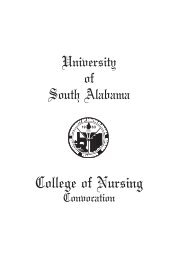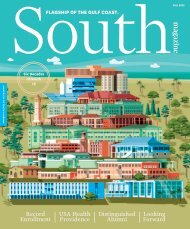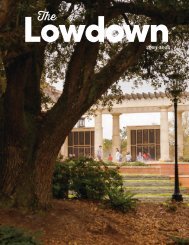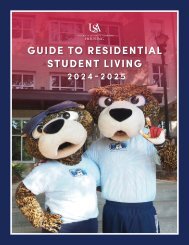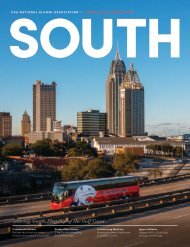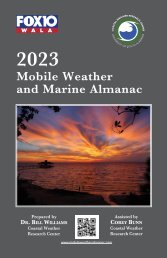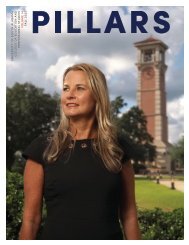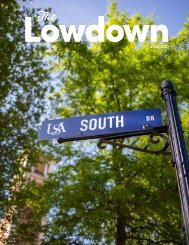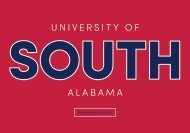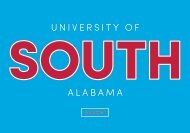JOURACA_SP_2017
Create successful ePaper yourself
Turn your PDF publications into a flip-book with our unique Google optimized e-Paper software.
Assessing Firing Characteristics of Locally<br />
Sourced Clays and Their Potential for Use in<br />
Pottery and Ceramics<br />
Mary Cave<br />
Clay has been used to manufacture pottery<br />
for approximately 20,000 years. Over that<br />
time, all major cultures learned which clays<br />
and other ingredients were best for producing<br />
vessels and other ceramic products. Because<br />
these basic ingredients were locally<br />
sourced, there was significant variation in<br />
the nature of the clay bodies as far as plasticity,<br />
refractory firing temperatures, shrinkage,<br />
texture and color were concerned.<br />
Modern clay bodies that are available commercially<br />
are manufactured to meet industrial<br />
standards with respect to these properties<br />
and for the most part, this is welcomed by<br />
ceramists that desire consistency with respect<br />
to working and firing. However, for<br />
many artists, especially those that specialize<br />
in atmospheric firings, the character of the<br />
clay body is as important as the consistency.<br />
A locally sourced clay used in a wood-fired<br />
kiln using locally sourced wood adds "local<br />
flavor" to their pieces. The Gulf Coast is<br />
enriched with modern clay-dominated depositional<br />
environments and clay-bearing Cenozoic<br />
geological units. This study seeks to<br />
assess the ceramic potential of some of<br />
these materials. We have sampled a variety<br />
of modern clay materials from Weeks Bay<br />
and the Mobile River Delta, as well as clayrich<br />
intervals of the Citronelle Formation<br />
(Pliocene), the Bucatunna Clay Member of<br />
the Byram Formation (Oligocene) and other<br />
undifferentiated Miocene units, all within<br />
160 km of Mobile, Alabama. Each sample<br />
Department of Earth Sciences<br />
Earth Sciences<br />
Mentor: Dr. Douglas W. Haywick<br />
will be geologically assessed (clay mineral<br />
composition, carbon and carbonate content,<br />
grain size etc.) before being worked into<br />
clay bodies for test firing. Firing will be<br />
done under controlled conditions in a kiln at<br />
low fire (c. 1000°C), medium fire (c. 1200°<br />
C) and high fire (c 1300°C) settings as well<br />
as in a wood fired kiln. The quality of the<br />
fired ceramics will then be evaluated by ceramic<br />
artists. It is rare to find a naturally<br />
occurring clay body that can suit all requirements<br />
of all ceramists (especially for high<br />
temperature firings), but studies such as<br />
ours will provide important information<br />
about the quality of the materials that are<br />
locally available to artists.<br />
9


